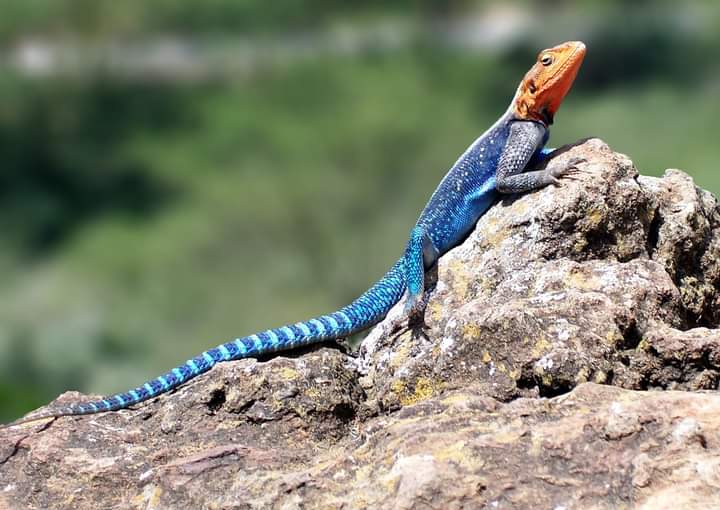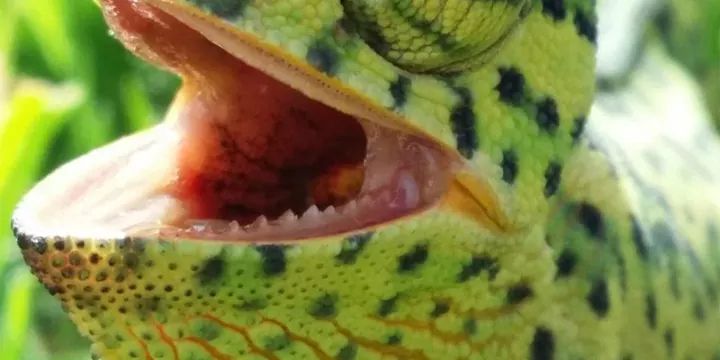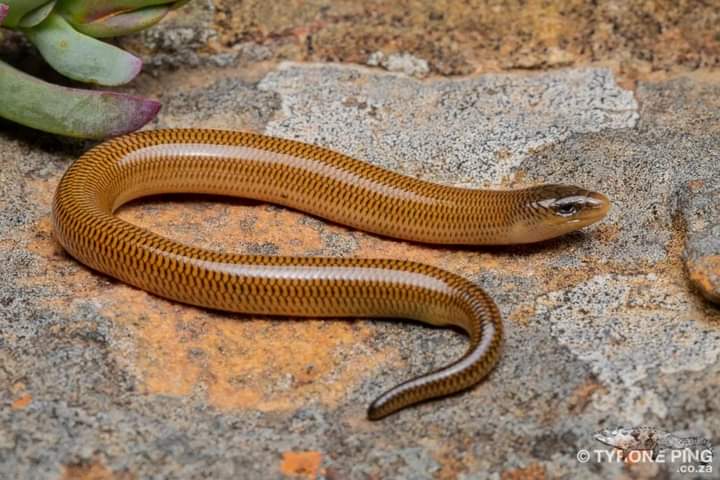
Lizards are the most varied group of African reptiles — there is 6, 500 species in the world. Only is Southern Africa there are about 400 species, and that is about a third of the reptiles native to Africa — compare that to about 273 species found in America.
- Agama lizard, one of Africa’s most popular lizards.
Male agama lizards fiercely protect their small area of land from other rivals, that often challenge him for his perfect territory — this he needs to attract the girls. When a male encounters a rival (another male), there is a lot of head-bobbing, and some might think they are dancing, but no. This is the start of the agama-battle.
As the rival approaches, the other male starts bobbing (nodding, shaking up and down) his head quite fast. The rival notices and bobs back, like he is recognising and returning the greeting to the defender, but this defender will fight and show no mercy. So, it is up to the rival to turn around or fight.
There is a lizard, native to Nepal, India, Sri Lanka and Pakistan that moves a bit differently to other lizards — it runs, pretty fast, on not four limbs, but stands up and actually ‘runs’. The bipedal movement is the one they use the most to move from A to B. This unusual lizard is the Sitana.
Chameleons – African Reptiles

A chameleon’s eyes are so interesting because they can move independently of one another. Like it can have one eye on a fly, but the other eye is moving around to look out for enemies, like birds and snakes, sometimes, but rarely monkeys, but their greatest enemy is mankind. Many of them are stolen from the wild for the pet trade, man starting unnatural forest fires or/and using pesticides that poison and kill many, and the chameleon is not poisonous and does not attack mankind. They are peaceful African reptiles.
Chameleon’s eyes look unusual. Their shape is unique among animals, with no upper or lower eyelid. Instead, they have one big eyelid per eye that’s shaped like a cone. It covers the eye nearly completely, leaving just enough opening to expose the pupil.
Chameleons are reptiles that are part of the iguana suborder. These colorful lizards are known as one of the few animals that can change skin color. However, it is a misconception that chameleons change colors to match their surroundings.
According to the Integrated Taxonomic Information System (ITIS), there are 171 species of chameleons. With so many different species, there are many different sizes.
The largest chameleon is the Parson’s chameleon, according to Encyclopedia Britannica. It can grow up to 27 inches (69.5 centimeters) long. The Madagascan, also known as the Oustalet’s chameleon, is also very large and grows up to 23 inches (60 cm) long.
The smallest chameleon has a special distinction. It is also one of the smallest vertebrates ever discovered. The leaf chameleon grows to just 0.5 inches (16 millimeters) and can sit comfortably on the head of a match.
Unlike other animals, chameleons continue to grow throughout their lives. As their old skin gets too small, they will shed it in bits and pieces, dissimilar to snakes that shed their skin all at once.
Skin of many colors
Changing skin color is an important part of communication among chameleons. According to the San Diego Zoo, a chameleon’s skin changes colors in response to its emotions, such as anger or fear, changes in light, temperature or humidity.
The brighter the color, the more dominant the male is, and the more attractive he is to females. A submissive male is usually brown or gray. Females use their colors to accept or reject a suitor, and their color can also indicate that she is pregnant.
A new study has found that chameleons can rapidly change color by adjusting special cells, called iridophore cells, in each layer. The chameleons can change the structural arrangement of the upper cell layer by relaxing or exciting the skin, which leads to a change in color, researchers found. [Photos: How Chameleons Change Color]
Habitat
Chameleons live in Madagascar, Africa, Spain, Portugal and Asia in rain forests, savannas, semi-deserts and steppes, according to the San Diego Zoo. They typically stay in trees or bushes, though some species do live on the ground. For example, the horned leaf chameleon lives in dead leaves on forest floors according to the National Wildlife Federation. [Photos: 11 Colorful Chameleons of Madagascar]
Habits
Most chameleons have a prehensile tail that they use to wrap around tree branches. Their hands and feet have large toes that help them cling to branches.
Besides changing skin color, chameleons have another feature that no other animals have. Their eyes can move independently of each other, enabling them to look in two different directions at once. Chameleons have a full 360-degree view and can focus their eyes quickly and enlarge what they are looking at like a camera lens.
Chameleons are loners. In fact, most of the time females don’t want males to even come near them. During the rare moments when the female is willing to be touched, the male will approach for mating. A brighter colored male chameleon is more likely to convince a female to mate than a duller colored male.
Diet
Chameleons eat insects and birds. To catch their prey, they creep along very slowly. Once the prey is in reach, their suction cup tongue shoots out and sticks to the insect. Their tongues can be as twice as long as their bodies when stretched out to catch prey, according to Encyclopedia Britannica. The insect is drawn back into the lizard’s mouth to be digested by strong stomach acids.
Water is very important to chameleon growth and health. They either slurp water up using their tongues or the inhale it.
Offspring
Chameleons are different from many African reptiles because some of the species, like the Jackson’s chameleon, have live births. These species can give birth to eight to 30 young at one time after a gestation of four to six months. While the young are born live instead of in an egg, they started as an egg. These mothers incubate the eggs, minus a shell, inside of her body instead of laying them in a nest.
Other chameleon species lay eggs that have an incubation period of four to 24 months, depending on species, according to the San Diego Zoo. The size of the chameleon predicts how many eggs she will lay. Small chameleon species lay two to four eggs while larger chameleons lay 80 to 100 eggs at one time.
No matter what species, chameleons become mature at 1 to 2 years of age. The exception is the Madagascan chameleon. It has been labeled as the vertebrate with the world’s shortest life span, according to Encyclopedia Britannica. Their eggs hatch in November, the young become adults in January, they lay eggs in February, and then the entire adult population perishes after a lifespan of just three months.
Classification/taxonomy
The taxonomy of chameleons, according to the ITIS, is:
Kingdom: Animalia
Subkingdom: Bilateria
Infrakingdom: Deuterostomia
Phylum: Chordata
Subphylum: Vertebrata
Infraphylum: Gnathostomata
Superclass: Tetrapoda
Class: Reptilia
Order: Squamata
Suborder: Iguania
Family: Chamaeleonidae
Subfamilies: Brookesiinae, Chamaeleoninae
Genera & species: Within the two subfamilies are nine genera and 171 species. A few examples — Calumma parsonii (Parson’s chameleon), Furcifer oustaleti (Oustalet’s chameleon), Brookesia minima (pygmy leaf chameleon), Chameleo jacksonii (Jackson’s chameleon)
Conservation status
According to International Union for Conservation of Nature’s Red List of Threatened Species, many species of chameleon are endangered. Some species that are considered in danger of extinction are the tiger chameleon, Elandsberg dwarf chameleon, Namoroka leaf chameleon and the Decary’s leaf chameleon.
While concrete data on wild lizards and verifiable reports concerning captive specimens are rare, it’s clear that the larger species of chameleon live longer than most of the smaller species do. Parson’s (Calumma parsonii), veiled (Chameleo calyptratus) and Oustalet’s (Furcifer oustaleti) chameleons are all large species, known to survive for five to eight years in the wild.
In captivity, most have similar or longer lifespans; veiled chameleons are known to live for at least 10 years, and some experts suspect that Parson’s chameleons can reach two decades. Larger species vary in their maturation rate; veiled chameleons mature quickly and can reproduce at 4 to 5 months of age, while most panther chameleons need 12 to 18 months to mature.
Chameleons do not have ear openings, but they are not deaf. They can hear higher frequencies of sound. They curl up their tails to show aggression or ready to fight for their protection. They possess tiny teeth which are difficult to see, for crushing insects but does not have a replacement for the teeth when lost, like in humans.
Geckos African Reptiles Facts
Geckos are clever little things, and many have figured out that the lights humans use in their homes, attracts many insects. So some set up their territories close to or in your home to feast on those delicious insects.
- They are not poisonous or venomous, and are calm/docile lizards, a frightened gecko, though, can bite (but not often) when handled.
Skinks

Skinks are probably the biggest family of lizards. Around the world, there is about 1, 400 of them. They are beautiful lizards — there scales fit so neatly into one another — they shine and move fluidly. In Africa, we are familiar with a certain type — commonly called ‘legless lizards’. Some of them do have legs, but ridiculously small they can no longer be used for what they should be doing. Skinks are not poisonous. A widespread lizard in Africa.
General Reptilian – General Africa facts

The first crocodiles to appear on earth, dated -through fossil records, was in the late Triassic period, 250 million years ago alongside the tortoises and EARLY dinosaurs. And a few million of years later, after the dinosaurs were wiped out, the mammals appeared…. But, the crocs and tortoises always remained.
- Turtles are tortoises. Seriously.

